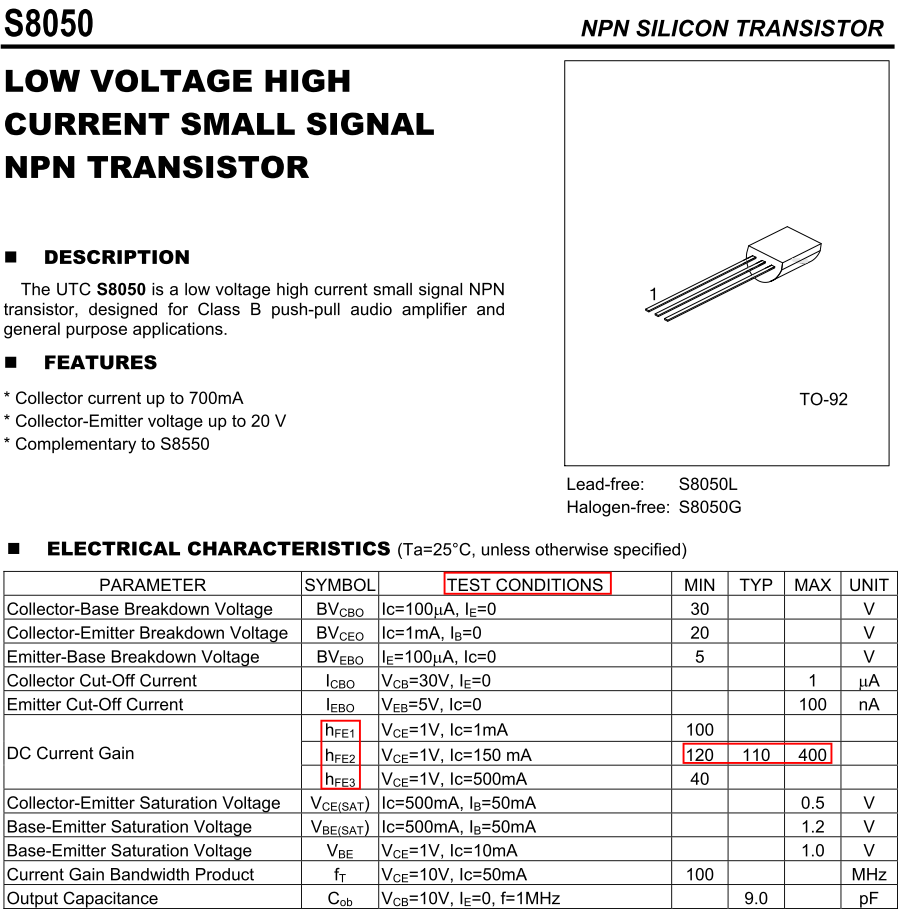Hello,
I am a TI chip user and I am trying to control a stepper motor with a simple transistor-based switch. Although these transistors does not come from TI, I still with to consult with the experts here on some basic questions:
The transistor I bought from en electronic market has labeling as "S8050 D 331". I used a multimeter to measure its hfe value and it shows 186 (varying between 186 and 188).
However, I googled "S8050" and found a document from http://www.unisonic.com.tw/datasheet/S8050.pdf which appears to me somewhat confusing:
- There are hfe1, hfe2, hfe3 for this S8050 transistor and for each there are associated MIN, TYP and MAX value. for hfe1and hfe3 there are only a MIN value, but for hfe2 the values MIN, TYP and MAX are all exist. Why is the difference?
- What does hfe1, hfe2 and hfe3 mean? If they all exist, do I still have a unique value? Which one of them correspond to the 186 value which I got from the multimeter?
- Why for each of them there are a range of values (MIN, TYP, MAX)? If the hfe has, for example like hfe2, MIN value as low as 100 and MAX as high as 400, then how can I know exactly which hfe value the transistor will operate on, and consequently, how should I design the circuit (resistance values, saturation mode, etc.)?
I could hardly see any clue in this data sheet. Help will be greatly appreciated.
Zheng


